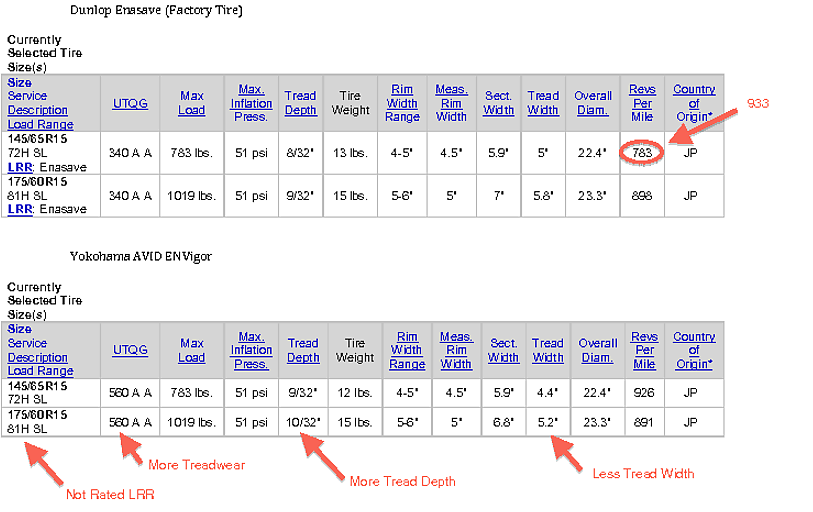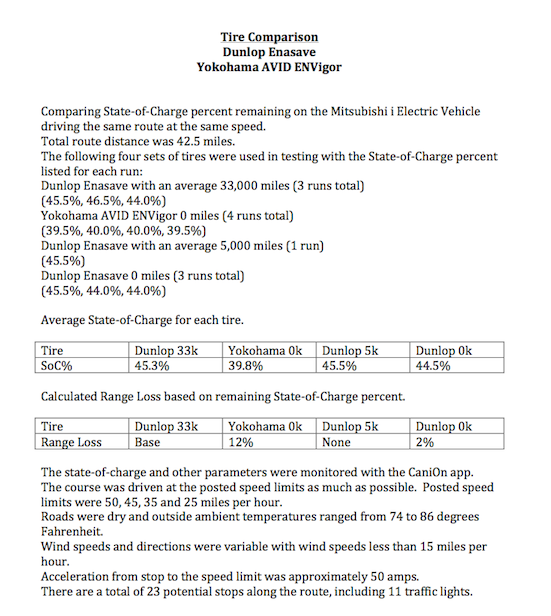Back in January 2014, after my OEM Dunlop Enasaves wore out, I replaced them with Yokohama AVID ENVigors.
http://myimiev.com/forum/viewtopic.php?p=14928#p14928
Further on in that thread (now closed) I provided further discussion of the Yokohamas, with the conclusion that, although their roadholding was good, they were not as efficient as the Enasaves. They also had a higher road-noise level than the Dunlops.
Now, after 16,000 miles on them, the front tires are starting to wear out (especially the left front, probably due to my zooming on and off Interstate cloverleaf ramps), and I suspect I may be replacing the entire set by the time winter rolls around.
The good news is that with this wearing out the i-MiEV's range appears to have returned to 'normal'.
I have also heeded the sage advice of Don on this forum and, since I often let others borrow this i-MiEV, in the interest of 'safety' I have reduced the tire pressures to 44psi. The i-MiEV's manufacturer-recommended tire pressures are 36psi.
http://myimiev.com/forum/viewtopic.php?p=14928#p14928
Further on in that thread (now closed) I provided further discussion of the Yokohamas, with the conclusion that, although their roadholding was good, they were not as efficient as the Enasaves. They also had a higher road-noise level than the Dunlops.
Now, after 16,000 miles on them, the front tires are starting to wear out (especially the left front, probably due to my zooming on and off Interstate cloverleaf ramps), and I suspect I may be replacing the entire set by the time winter rolls around.
The good news is that with this wearing out the i-MiEV's range appears to have returned to 'normal'.
I have also heeded the sage advice of Don on this forum and, since I often let others borrow this i-MiEV, in the interest of 'safety' I have reduced the tire pressures to 44psi. The i-MiEV's manufacturer-recommended tire pressures are 36psi.





































